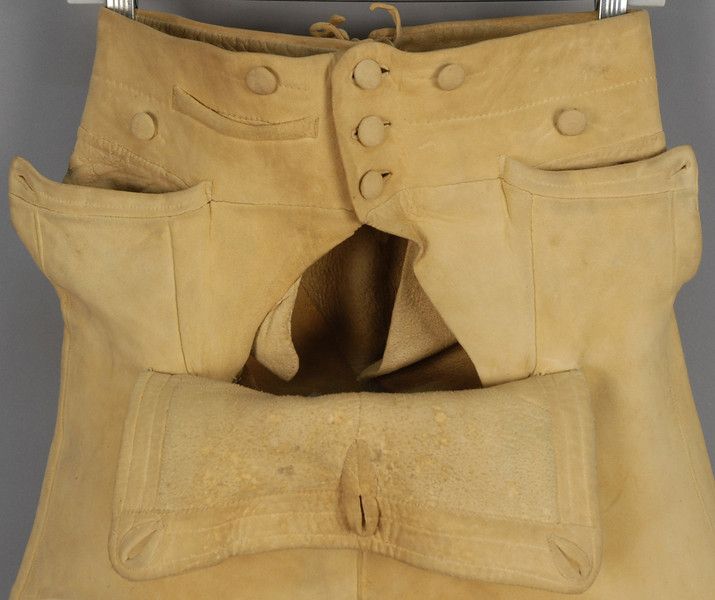- Joined
- May 6, 2014
- Messages
- 17,441
- Reaction score
- 16,449
The last photo large photo at the bottom is a very well made pair of breeches They are the wide fall type and wouldn't be that much more difficult to make over the narrow type. The only question I would have with those are the buttons seem to be two piece fabric buttons and I don't if they were around in the 18th century.
Buttons covered with the same material as the item of clothing was VERY common in the 18th century. Though Forum Member Coot is one of, if not the forum expert on this, here's a little info I can provide.

"Domed Bone Button Molds
Bone button molds are slightly domed on one side and flat on the other as were common in the mid to late 18th century. Button molds made of bone like this are found abundantly at 18th century cites across the United States, Canada and Europe. Many people feel these were the most common type of button found on civilian clothing throughout the 18th century. Fabric covered buttons may be made of either wood or bone but if the garment will be washed bone may hold up better. It is easiest to make "death head" buttons using wood button molds since the rough texture of the wood help hold the threads in place. Directions for cloth covered buttons are included in The Lady's Guide to Plain Sewing [Book II] and The Packet V. For example in New Jersey in 1780, there was "Stolen from a House - one light coloured watch-coat, buttons covered with the same coloured cloth".
Wm. Booth, Draper - everything for American Revolutionary War reenactors (wmboothdraper.com)
Gus








